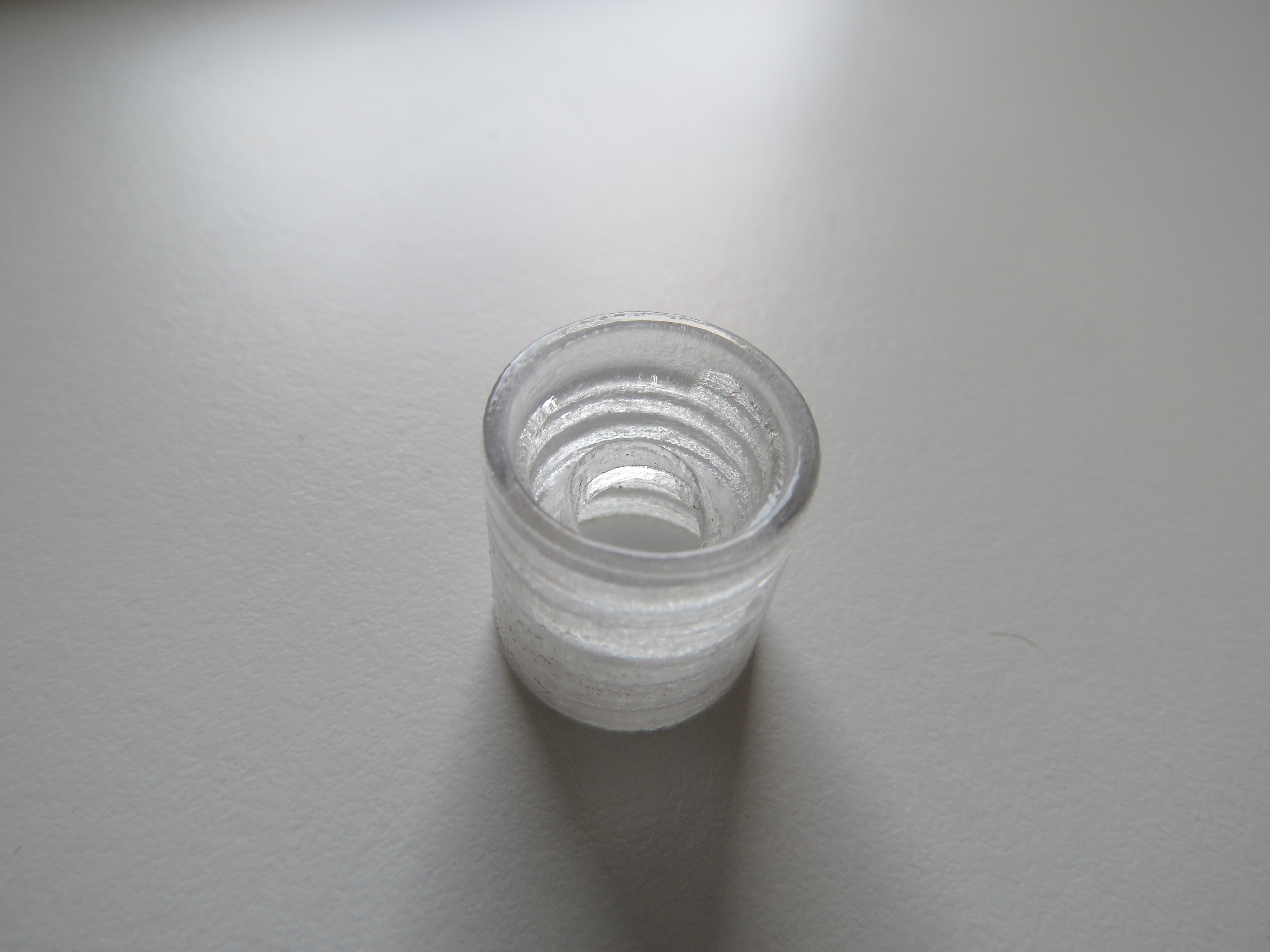- français
- English
Potential improvements
After having printed the whole double cap and verified that our model matches the vial and pierces as expected the seal, we can improve the concept.
First we have contacted the “STI atelier” at EPFL and especially Roland Dupuis to get somes advices about 3D printing. We wanted a smoother piece, especially for the screw pitch, than we get from the Prusa Mendel I3 3D printer. He advices us to print the double cap with the multi-jet machine. This type of 3D printer allows the deposit of liquid polymers like a classical printer and also is the most precise type of 3D printer. In fact, the result is perfect. The previous printing with the “Fused Deposit Modeling” method give us a result precise enough as well (especially the screw pitch matched the vial). But it remained some deposit, because of machine error, and the piece wass not very smooth. Here the piece we get presents no default. The shape and the screw pitch are smooth. There is no difference of diameter between the two sides of the double cap, because the temperature of printing is constant. That is why this double cap screws as easily as the injected cap given with the vials.
The weakness of the type of printing is the price. We pay the printing piece relatively to its weight (2CHF the gram of material). So for a whole double cap, the price is : 2.4CHF, whether 40 times the price of the previous whole printed double cap.
Here is the double cap we get :

We also have the possibility to add a gasket between the screw pitch and the basis of the connector in the both sides of the double cap. It would strengthen the tightness of the double cap and prevent GMO flowing out.
This o-ring gasket must have an interior big radius of 8.20mm and a section radius of 1.9mm.
We have two option to make this gasket :
- Printing a gasket at the right dimensions with a material that remains flexible after printing
- Finding a gasket close to the optimal dimensions in a provider, like Angst+Pfister
The first solution has been rejected by Roland Dupuis, because of the too little dimensions and the fragility of the gasket, which could be removed by the washing step after printing. Thus we have looked at the gasket in provider offer, but no one has the optimal dimensions. If we take a non-optimal gasket size, it risks to preclude the screwing and the tightness of the double cap will be reduced. The other possibility is to adapt the double cap model, especially the connector part to the gasket size. But it is not optimal, because if :
- We reduce the connector diameter, the flowing will be more difficult (Reynold number)
- We increase the connector diameter, it will encroach in the screw pitch.
It can be a way of improvement, but for the moment we let the double cap without gasket.
- Ce wiki
- Cette page
